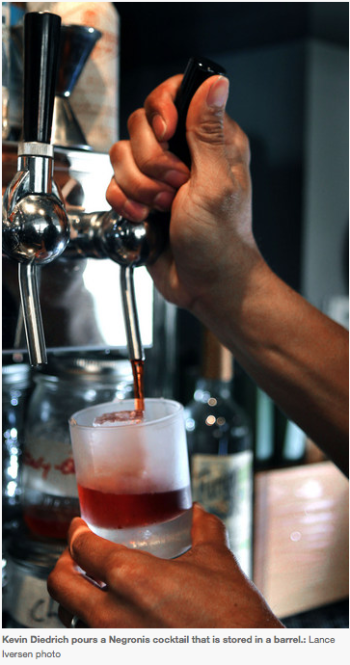this piece was originally published December 15 in Seedstock, the blog for sustainable agriculture focusing on startups, entrepreneurship, technology, urban agriculture, news and research.
Welcome to Alisha Lumea and Polly Legendre’s inaugural advice column for sustainability-minded food entrepreneurs who are seeking answers to questions about product branding, marketing, development and more.
This week’s questions come from John at Backyard Chicken Run in Chicago, Illinois
Questions:
1) are there products, like say a locally made root beer, or organic stone ground flour, that seem to be succeeding more often than not, in lots of locations around the country?
2) what do your instincts tell you would be the product or products that should have the highest likelihood of success, if there is such a category you can speak to?
Answers:
Value-added dairy products are a category we’ve seen great examples of all around the country. There are so many delicious, recognizable and well-loved things made with milk and cream — yogurt, crème fraiche, ice cream, and of course, cheese.
Grains fight an uphill battle. The commodity version is inexpensive, and they often live at the bottom of the priority list. Many of the most sustainability-dedicated chefs and consumers start at the top with proteins. They make the best choices they can afford in that category, and work their way back down through dairy, produce and last to pantry staples. If you’re a bakery, you might be able to stretch your budget to use local honey and some local dairy, but you can’t double the price of flour or sugar and stay in business.
Yogurt, ice cream and cheese have the added advantage of a naturally extended shelf life that gives some breathing room to production and ordering schedules. (In contrast, the minute you pull herbs out of the ground or a fish out of the water, they start losing freshness and value.) From the sales side, they’re versatile and offer a lot of possible customers, fitting into grocery stores, small gourmet shops and within foodservice from neighborhood restaurants to white tablecloth.
From our perspective, the best part of value added dairy products is that they’re a natural for the most exciting opportunities in food — co-productions between farmers and artisans.
Running a farm and selling a branded consumer product are different businesses. There’s a huge difference between making a little jam to sell from your farm stand and making enough jam to sell in shops. Many farmers don’t have the time, inclination or right skills to diversify into these new businesses, although they need new outlets for their raw materials. The good news is they don’t have to do it all. There are loads of aspiring artisans and chefs who have the culinary and business skills to launch these new product ventures and need reliable access to raw materials and a farm to table story.
But real partnership means both sides have to think beyond just the sale in front of them. They have to think about using their best assets to create something sustainable together. (There’s nothing new about this kind of cooperation. Our food system has just gotten out of practice.)
The city chef might have access to buyers and industry contacts, but no storage and no truck. A farm might be able to lend storage capacity and rent out part of their trucks that are already transporting goods to the city, but they may be too far out to constantly promote the product to its best advantage.
Back in October, farmer and good food advocate Joel Salatin addressed the small and passionate crowd at the Chefs Collaborative Summit in New Orleans. This was an audience of food professionals, so he cut to the chase and talked about the real business issues facing farmers — distribution, cost, and seasonal fluctuation.
One example he gave was the huge differential in pastured egg production by season. Customers want the same number of eggs each week, but chickens lay like crazy in late spring and not so much in winter. To keep up with your orders in winter, you need to keep a number of chickens that will have you drowning in eggs when they’re laying at their peak.
Joel Salatin put out the call: what we need are entrepreneurs to come buy all those spring and summer eggs from farmers and make frozen quiche to sell all year. (The same seasonal issues are true at farms of all kinds. Produce farms and orchards have seasonal excess and often a wealth of “seconds” that are perfect for preserving but unsellable fresh. Livestock farmers have cuts that need culinary transformation to appeal to the market.)
Now, we’re the kind of people who actually make quiche at home, but if there was a good tasting frozen option with a good story behind it, we would always have a few in the freezer. We like canning too, but we can’t put up enough to live off of all year. We always want to support the best in local and sustainable food, but we have late work nights and family chaos like the rest of America. Sometimes dinner has to be a low-maintenance affair.
This is what the market has lots of room for: products that transform raw materials that satisfy high standards of taste, ethical production, and a relatable story into something that fills a need in modern life.
_____________________
Submit Your Question(s) for Next Week!
You can submit your questions via email, facebook or Twitter.





